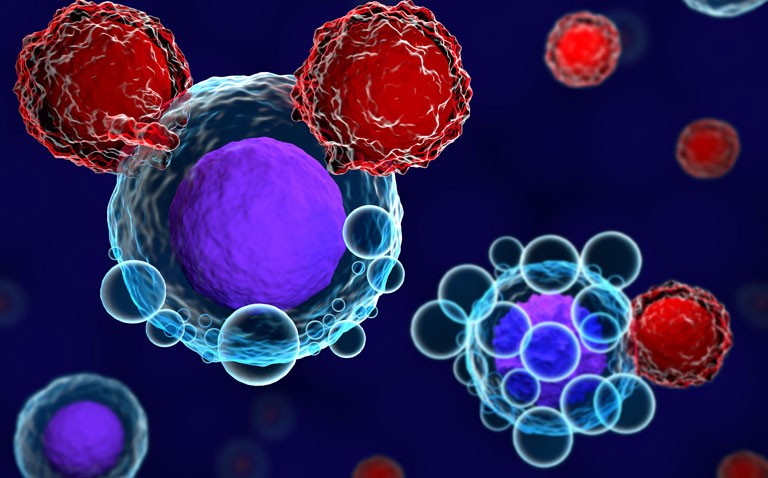Scientists and clinicians at UCL and Great Ormond Street Hospital studying the effectiveness of CAR T-cell therapies in children with leukaemia, have discovered a small subset of cells that are likely to play a key role in whether the treatment is successful.
Researchers say ‘stem cell memory T-cells’ appear critical in both destroying the cancer at the outset and for long term immune surveillance and exploiting this quality could improve the design and performance of CAR T therapies.
Researchers assessed the cells of patients involved in the CARPALL Phase I Study, which used a new CAR molecule known as CAT-19 developed between UCL Cancer Institute and UCL Great Ormond Street Institute of Child Health, for treatment in children with acute lymphoblastic leukaemia.
The team compared T-cells from patients who still had CAR T-cells detectable in the blood more than two years after their treatment, with individuals who had lost their cells in the one to two months post treatment.
Using a technique called ‘insertion site barcoding’, researchers were able to study the fate of different types of CAR T-cells in patients after they were given.
Corresponding author Professor Persis Amrolia, based at UCL Great Ormond Street Institute of Child Health and Consultant in Bone Marrow Transplant at GOSH, said: “Using this barcoding technique, we were able to see ‘stem cell memory T-cells’ play a central role both during the early anti-leukaemic response and in later immune surveillance, where the body recognises and destroys cancer cells.
“This suggests that this small sub-group of T-cells are critical to the long-term success of the therapy.”
Researchers say, this work indicates that the teams caring for patients could measure the types of CAR T-cells present after some someone has had their anti-leukaemia therapy, to gain an indication of whether they will be able to preserve their CAR T-cells into the future, avoiding relapse.
Professor Amrolia added: “This new insight may help us to improve our CAR T-cell therapy and work out which patients are at a higher risk of relapse and may benefit from a stem cell transplant after CAR T-cell therapy.”
Dr Biasco added: “It was extremely rewarding to see how the application of our new barcoding technology to study CAR T-cells is unveiling such important information about what happens to these cells after they are given to patients. We now plan to expand the technology we established at UCL and validate these findings in larger groups of patients.”
Co-author Dr Martin Pule said: “This research opens up new avenues to improve CAR design and manufacture, improving the performance of CAR T-cell therapy, to achieve a combination of early tumour clearance and long-term protection from relapses in patients with B cell leukaemia.”










